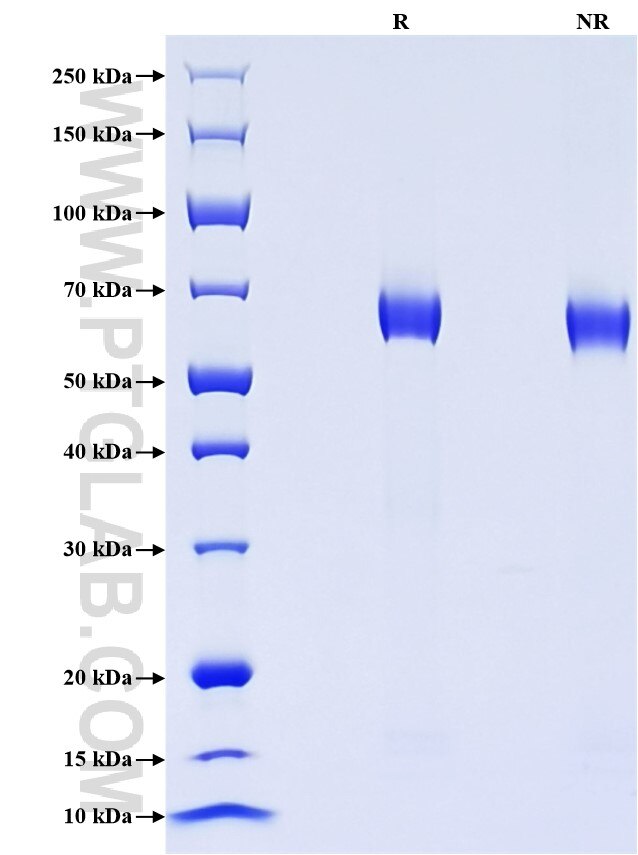Recombinant Mouse CD229/SLAMF3 protein (His Tag)
Species
Mouse
Purity
>90 %, SDS-PAGE
Tag
His Tag
Activity
not tested
Cat no : Eg1586
Validation Data Gallery
Product Information
| Purity | >90 %, SDS-PAGE |
| Endotoxin | <0.1 EU/μg protein, LAL method |
| Activity |
Not tested |
| Expression | HEK293-derived Mouse CD229 protein Lys48-Arg453 (Accession# Q01965) with a His tag at the C-terminus. |
| GeneID | 17085 |
| Accession | Q01965 |
| PredictedSize | 46.2 kDa |
| SDS-PAGE | 60-70 kDa, reducing (R) conditions |
| Formulation | Lyophilized from 0.22 μm filtered solution in PBS, pH 7.4. Normally 5% trehalose and 5% mannitol are added as protectants before lyophilization. |
| Reconstitution | Briefly centrifuge the tube before opening. Reconstitute at 0.1-0.5 mg/mL in sterile water. |
| Storage Conditions |
It is recommended that the protein be aliquoted for optimal storage. Avoid repeated freeze-thaw cycles.
|
| Shipping | The product is shipped at ambient temperature. Upon receipt, store it immediately at the recommended temperature. |
Background
Signaling lymphocytic activation molecule 3 (SLAMF3), also known as CD229 or Ly9, is a type I transmembrane glycoprotein that belongs to the SLAM family receptors. It is composed of an extracellular region, which consists of four Ig-like domains, a transmembrane region, and a cytoplasmic tail, which includes two immunoreceptor tyrosine-based signaling motifs (ITSMs) and other tyrosine residues that act as binding sites for the SH2 structural domains. SLAMF3 is mainly expressed in immune cells, such as T, B, and natural killer cells, and it is involved in the fundamental activation and suppression of these immune cells, as well as the regulation of complex immune networks.
References:
1.Tovar V, et al. (2000) Immunogenetics. 51(10):788-93. 2.Romero X, et al. (2005) J Immunol. 174(11):7033-42. 3.Sandrin MS, et al. (1996) Immunogenetics. 43(1-2):13-9. 4.de la Fuente MA, et al. (2001) Blood. 97(11):3513-20. 5.Zhou T, et al. (2024) Int Immunopharmacol. 133:112088.
